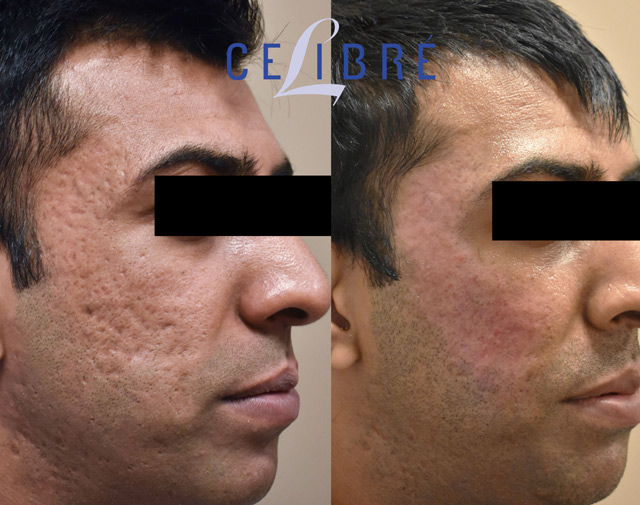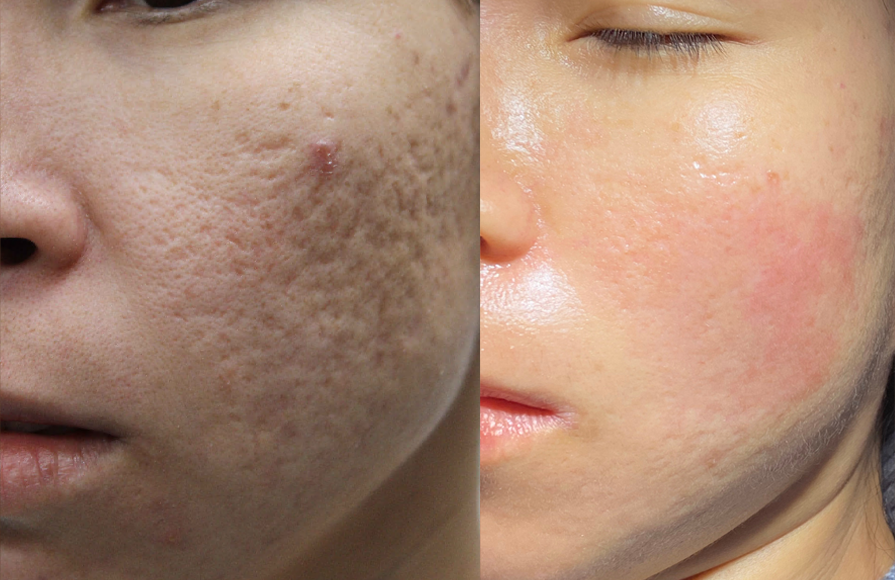Top Acne Treatment for Sensitive Skin: Gentle Solutions for Clear Skin
Top Acne Treatment for Sensitive Skin: Gentle Solutions for Clear Skin
Blog Article
Comprehending the Numerous Skin Problem and Reliable Treatment Alternatives for Acne Scars
Acne marks represent an intricate interaction of skin problem that considerably impact individuals' self-confidence and general skin health. Understanding the distinctive types of acne scars-- hypertrophic and atrophic-- along with their underlying reasons, is essential for identifying effective therapy approaches. Different healing options exist, ranging from sophisticated dermatological treatments to natural remedies. Nevertheless, the efficiency of these treatments typically depends upon tailored analyses by qualified specialists. As we explore the landscape of acne mark management, it comes to be evident that the trip towards clearer skin may involve more than just topical remedies.
Kinds Of Acne Scars

On the other hand, hypertrophic marks result from an overflow of collagen during the recovery procedure, resulting in raised areas on the skin. These scars are typically solid and can vary in color, often appearing red or darker than the bordering skin.
Understanding these kinds of acne scars is essential for creating a reliable therapy strategy - skin rejuvenation treatments. Alternatives may consist of chemical peels, laser therapy, microneedling, or facial fillers, tailored to the certain mark type. A comprehensive assessment with a skin specialist can help figure out the most proper treatment, thinking about the individual's skin type, mark seriousness, and overall skin health
Reasons of Acne Scarring
Marking occurs as an outcome of the body's natural healing action to inflammation and injury triggered by acne lesions. When acne forms, it sets off an inflammatory action, resulting in the launch of numerous cytokines and development aspects that promote recovery. This procedure can often lead to extreme tissue development or inadequate fixing, resulting in marks.
The primary reasons of acne scarring include the seriousness of the acne itself, duration of the lesions, and specific skin types. Extreme inflammatory acne, such as blemishes and cysts, is more probable to result in scarring because of deeper cells damages. Furthermore, incorrect handling of acne lesions, such as squeezing or picking, can intensify cells injury and swelling, increasing the likelihood of scarring.
Hereditary tendency additionally plays a considerable role; people with a household background of scarring are at a higher threat. Moreover, skin type and shade can affect mark development, as darker complexion may experience post-inflammatory hyperpigmentation, while lighter skin might create atrophic marks.
Eventually, recognizing these causes is necessary in taking care of acne and reducing the capacity for scarring.

Treatment Choices for Scarring
Efficient therapy options for acne scarring differ depending upon the kind and extent of the marks. Generally categorized right into atrophic, hypertrophic, and keloid marks, these conditions need tailored strategies for optimum outcomes.
For atrophic marks, which are defined by a loss of tissue, therapies such as chemical peels, microdermabrasion, and laser treatment are commonly utilized. These techniques advertise skin renewal and promote collagen manufacturing, thereby improving skin texture. Subcision, a minimally invasive treatment, can likewise work by separating fibrous bands below the skin.
Keloid and hypertrophic scars can be more challenging to deal with. Choices include corticosteroid shots to reduce swelling and flatten the marks. Sometimes, cryotherapy or laser treatment may be advised to decrease their look.
Surgical alternatives are readily available for serious scarring, where excision or skin grafting might be required. It's necessary for people to seek advice from with a skin specialist to examine their particular mark type and discuss one of the most suitable therapy plan. Combining several therapies usually produces the ideal end results, guaranteeing that each person's distinct skin disease is dealt with successfully.
Natural Home Remedy and Natural Solutions
All-natural remedies and natural home remedy can provide an available approach for people looking for to improve the look of acne marks (acne scars treatment). Numerous active ingredients found in the home kitchen have demonstrated prospective advantages in improving skin texture and promoting recovery

Another effective option is lemon juice, which works as a natural exfoliant and can lighten hyperpigmentation. Nevertheless, it ought to be used very carefully, as it might create photosensitivity. Oatmeal masks are also helpful; their gentle exfoliation can aid remove dead skin cells while relaxing inflammation.
Essential oils, such as tea tree oil and lavender oil, can further sustain mark recovery as a result of their antimicrobial residential properties. It is critical to do a patch test before using any kind of treatment to guarantee there are no unfavorable responses. These natural remedies can be a corresponding technique in the journey to reduce acne scars.
Preventing Future Scarring
Embracing a positive approach to skincare can significantly decrease the danger of creating future acne scars. Among the vital approaches is to manage acne successfully as it arises. This involves making use of non-comedogenic skincare products and medications suggested by dermatologists that target acne without irritating the skin. Routine cleansing, peeling, and hydration can assist preserve skin health and wellness and prevent clogged pores.
Additionally, preventing the lure to squeeze or select acne lesions is important, as this can lead to swelling and subsequent scarring. Rather, individuals should concentrate on using topical treatments that promote healing and lower inflammation. Ingredients such as salicylic acid, benzoyl peroxide, and retinoids are known for their effectiveness in taking care of acne and decreasing marks.
Sunlight protection is one more crucial component; direct exposure to UV rays can dim marks and hinder healing. Consequently, using a broad-spectrum sunscreen daily can alleviate these effects - acne scars.
Last but not least, preserving a healthy diet abundant in anti-oxidants and staying moisturized supports skin regeneration. By carrying out these preventative actions, people can dramatically lower their threat of future scarring and promote overall skin health and wellness.
Conclusion
In final thought, a detailed understanding of acne scars, including both hypertrophic and atrophic types, is essential for effective treatment strategies. Consultation with a skin specialist stays important to develop tailored strategies that think about specific skin types and mark extent, ultimately boosting the effectiveness of mark monitoring strategies.
Acne marks stand for a complex interaction of skin conditions that considerably influence people' self-worth and total skin wellness. The two key classifications of acne marks are hypertrophic and atrophic marks. These scars are additional identified into three subtypes: ice pick scars, which are deep and slim; boxcar marks, which are wider and have well-defined edges; and rolling scars, which produce a wave-like look due link to unequal skin appearance.
A complete appointment with a skin specialist can aid identify the most ideal intervention, taking right into account the person's skin type, scar seriousness, and total skin wellness.
Appointment with a skin doctor continues to be vital my website to devise customized methods that think about private skin kinds and mark seriousness, inevitably enhancing the effectiveness of mark management methods.
Report this page